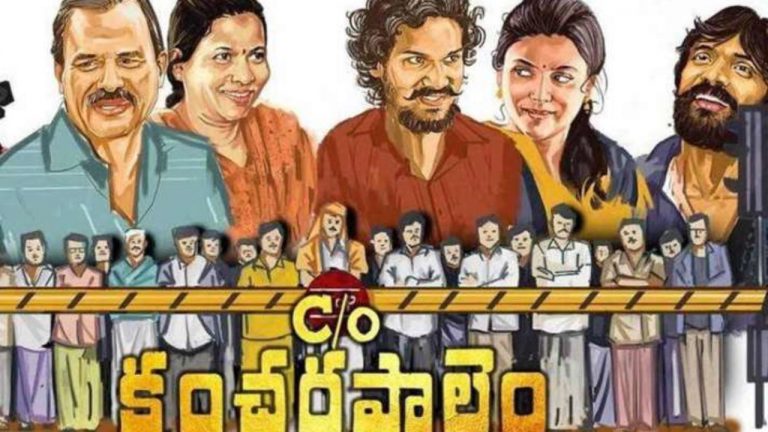What’s cooking in your Indian Kitchen, the Great?
Pooja Warrier, a product of the 80’s, is an emerging writer with a passion for crafting short stories in the fiction /mystery genre. As a creative wordsmith, she has produced some great crafts on online platforms like The ArmChair Journal and Unverbalise. She has also co-authored a couple of anthologies. In her first book, Crash Course she brings together a collection of candid personal stories woven together by her unique experiences and perspectives. She is currently working on her debut full-length novel while balancing her job as an HR Manager with a reputed MNC. She currently resides in Kerala with her family and enjoys reading and watching movies. She admits having a somewhat unhealthy obsession with cooking, sketching and drawing.
Drop her a line anytime at [email protected]
The link to her write-ups – https://linktr.ee/pooja_warrier
If you take a quick look into my routinely used culinary bible you would find specifics of umpteen tested and proven Indian kitchen experiments with evidence that speak highly of its contents – polka prints of oils drips and turmeric yellow spots. According to recent surveys, people have been looking up the internet for recipes like never before during the pandemic. So, what kind of recipe is the patricentric Indian society rustling up these days? (By the way, you just won’t find it in my bible). I will tell you anyways. Pretty obvious, wasn’t it?
In a mood to concoct a flawless Indian housewife or bahu ( in accordance with societal norms) which forms an indispensable part of the Indian cookhouse? A one-pot dish immensely popular across the Indian subcontinent but may vary from region to region in its specifications.
So, what’s a ‘housewife’ ?
The Oxford English Dictionary’s (Compact edition, 1971) definition of a housewife (n) goes like this – a light, worthless woman/girl.
In Arabic, she is known as Rabbaitul Bait which translates to “The Queen of the House.”
Synonyms : Domestic rockstar, Home engineer, Lady of the house, Chief cook, Dishwasher et al.
For beginners, you may think the recipe is arduous and sophisticated. But I assure you it’s no rocket science. You can see for yourself.
Servings : Serves extensively 24/7 irrespective of age and gender.
Prep time : Lifetime ( No dish is perfect you see! There’s always room for improvement.).
Cost : My! My! Now that varies with stipulations.
Where to buy : Available in all households.
Cuisine : Multi-cuisine (Proficient in cooking all the dishes under the sun! Astute in making the perfect round rotis too.)
Ingredients :
- 1 whole marriageable woman (preferably 100 % virgin). (Note : Any shape and size of the “home wrecker’s ” choice can be chosen for preparation.).
- 2 cups of possible degrees under the sun.
- 2 cups of well minced dreams/ career goals.
- 3 cups of gold ornaments for frequent adornment.
- 4 cups of love for the home wrecker and his family.
- ½ cup of knowledge of modern Indian kitchen gadgets.(Optional – it’s not going to be of any use anyways!)
- 4 cups of passionate libido that should be in line with the homewrecker’s whims and fancies. (Note : Make sure not to demand for more foreplay/oral sex.)
Method of preparation :
- Take the chosen whole Indian woman. Clean well by washing with lukewarm water and soap and thereafter drying with a clean towel. This helps to clear the mind of all dreams and desires. Keep aside.
- In a large mixing bowl mix ingredients from 1 to 7. Make sure to mix well till it becomes a smooth batter.
- Now take the Indian woman and marinate with the batter and keep aside. Spread the batter well across.
- Once that’s done, keep aside well covered.
- Check for an auspicious date and time. On the chosen date and time in the backdrop of Vedic chants, the dish would be ready to be served hot for lifelong monotonous drudgery as prescribed by the society.
If you haven’t tried making one yet, it’s never too late to make an attempt towards the same. After all, it’s a dish perfect for any time of the year !
Since it’s raining domestic cook houses and their culinary experiments, let’s just probe into the under-discussed uphill battles of those jillion unsung domestic goddesses as depicted in the movie The Great Indian Kitchen (TGIK). TGIK is the most talked about Indian comedy drama film (Malayalam) these days and is written and directed by Jeo Baby.
The lead roles of the movie are played by Nimisha Sajayan (wife) and Suraj Venjaramoodu (husband) both being Kerala state award winners. This family entertainer is distributed by the streaming platform, Neestream with a running time of 100 minutes.
Never ever be fooled into thinking that the movie is a food flick by its title. For sure The Great Indian Kitchen is bound to elevate your cravings for those relishing traditional dishes from Kerala – Kappa (Tapioca) Biriyani, authentic fish curry to go with fish fried in coconut oil, traditional Kaaya varuthadhu (the famous golden and crunchy banana chips), Puttu (cylindrical steamed rice cake with coconut shavings) served with Kadala (black chickpeas) cooked in spicy and aromatic coconut gravy and the black tea. But on the flip side, it brings to light a culture of oppression and intrinsic misogyny prevalent in today’s households perfected in the name of religion and tradition to keep a wife submissive to her spouse.
Something worth mentioning in the movie is the fact that the characters are given no names, probably to serve as a replica of a sight common in many households. The movie is served with no background music and a skimpy number of dialogues. The only background noises are that of cutting, chopping, spluttering of mustard, sautéing, frying, clanking of vessels, sweeping and mopping which aims to show the repetitive nature of chores relentlessly done by the women of the household, honed to impeccability by years of practice.
The movie’s opening shot shows Nimisha Sajayan dancing merrily with so much passion reflecting in her eyes which I could very much relate to. The subsequent shots take us to the traditional pennu kaanal (the ritualistic meeting of prospective bride and bridegroom) scenes – snacks being prepared and served with tea, brief tête-à-tête between Nimisha Sajayan (from a Gulf returned Malayali family) and Suraj Venjaramoodu (a lecturer by profession from a reputed family) under the scrutinized stares of the elders of the house. And then the day of the BIG FAT INDIAN WEDDING !
The new bride leaves for her marital home. From there, her life is up for a toss as she is forced to fit into a mould as dictated by the patriarchal society. Post marriage, the husband’s life goes on without even a slight change in his daily routines. For instance, he does yoga before breakfast and leaves for office. Her father-in-law, a relic, waits for his wife to bring his toothbrush with paste on while he relaxes with his newspaper on the porch. For the wife, it’s a different ball game altogether – a leaking sink, clearing trails of leftovers left by husband and father in law, cutting vegetables, smoking up the traditional chulha to cook rice as demanded by father in law, grinding in the traditional ammikallu (stone grinder), washing dishes etc. To add to her miseries, her mother in law (though a submissive wife, a very supportive woman of her daughter in law’s aspirations – which was quite a relief to see !) leaves to tend to her pregnant daughter elsewhere. As the movie progresses, one can sense the rage and frustration welling up inside the wife ready to burst out. The film also takes a bold stand to highlight the archaic practices of contempt and forced isolation of menstruating women.
A commendable fact is that the men of the house are not portrayed as an abusive or violent lot, but as soft spoken human beings who impose their decisions on the woman against her will. Slowly and steadily, we see how a woman is stripped of her basic human rights be it about asking for a cleaner dining area, for more sexual foreplay or pursuing her career aspirations. The movie wraps it up showing Nimisha back to her dancing aspirations with the same initial pride and Suraj remarried, oblivious to the harsh reality that the second would soon meet the fate of the first.
For those macho men who do their share of things around the house you may continue to do so. But for those who don’t, The Great Indian Kitchen is sure to give you a prick of guilt and help see your women in a new light !








